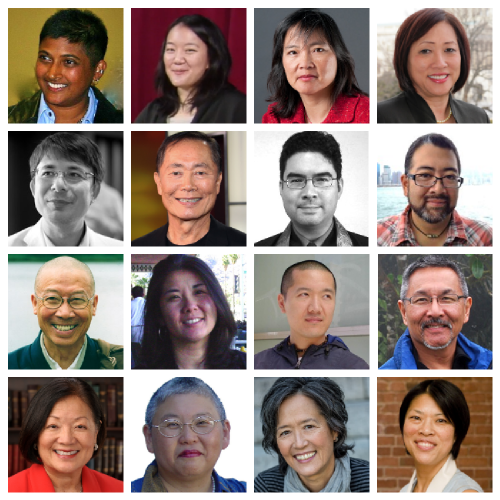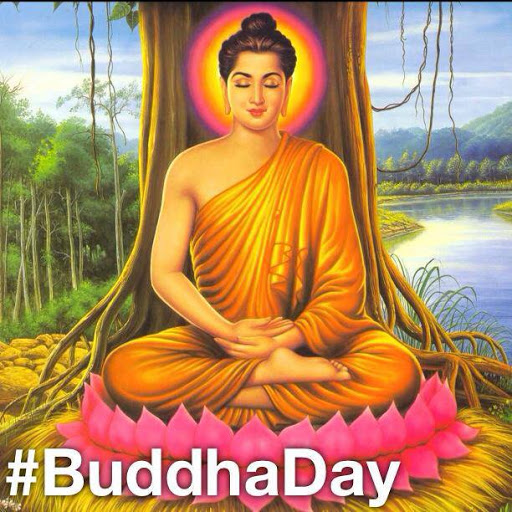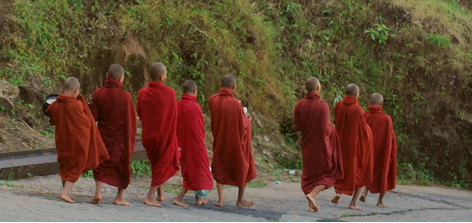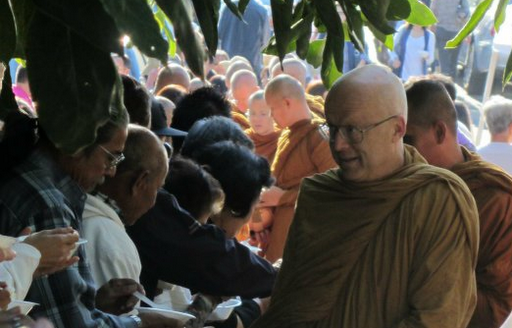It’s that time of year again.
With no response to my feeble request for a holiday interview, I decided to answer the usual interview questions myself.
Who are you?
I’m an Asian American Buddhist blogger. I blog on Dharma Folk and the Angry Asian Buddhist blogs. As of the past few months, you’re likely to find more frequent updates on Twitter.
What’s the Buddhist significance of this holiday?
For most of my life I haven’t thought of this holiday as having any intrinsic connection to Buddhism. I’ve always seen it as a holiday derived from Chinese culture that’s been infused with some Buddhist practices. But the same could be said of a lot of other “Buddhist” holidays like Rohatsu, which at root is a Chinese harvest festivalthat’s evolved into something that most Western Buddhist bloggers would only recognize as a winter Zen retreat.
If there’s anything very “Buddhist” about this day, I’d say it’s an opportunity to start the year with some good “Buddhist” deeds, so that these deeds will hopefully trickle forward into positive habits throughout the year. I usually begin with a midnight vegetarian meal and later visit temple with family or friends.
That said, I just read on Rev. Heng Sure’s blog that this day has another Buddhist connection of which I’d never known: “For practicing Buddhists the first day of the lunar new year is the celebration of Maitreya Bodhisattva’s anniversary. Maitreya is famous for having subdued his temper through learning ‘patience under insult.’ You simply can’t upset him. Insults, curses, even blows will not get his goat or shake his equanimity. He has a big belly, not from greed for food but from holding all the chi (qi) that people have thrown at him. Swear at him, cut him off in traffic, insult his mother, he endures it all because he has subdued himself—his false pride and vanity are long gone. He sees through the surface of relationships and understands that you wouldn’t be giving him grief if you had peace of mind. Why increase your afflictions by getting caught up in your unresolved drama? It has nothing to do with him, and he won’t waste a second of precious lifetime struggling with hurt feelings or animosity.”
What does this holiday mean to you?
For me, the New Year is all about home, family, and community. Friends have been sending me Chinese New Year videos that remind me to appreciate my parents, to never underestimate the power of love, and to never leave home behind. I haven’t eaten a New Year dinner with my family in well over ten years, but I hope to change that starting next year.
What do you plan to do for the Lunar New Year?
I’ve already done the temple visits. On the Saturday before New Year, some friends invited me to visit Hsi Lai Temple. I hadn’t visited the temple in five years, so it was refreshing to walk around, partake in delicious vegetarian food, and observe some New Year rituals before the crush of visitors expected yesterday and today.
As I’m writing this post late at night on Lunar New Year’s eve, I’m probably going to have a small vegetarian snack at midnight before preparing for tomorrow. My New Year’s plan is to send good wishes to my family and friends, to practice sitting meditation in the morning and evening, and to reflect and plan on what I’d like to do differently this year compared to last year.
There are a couple other Lunar-ish New Years coming up, so stay tuned.
And Happy New Year!






